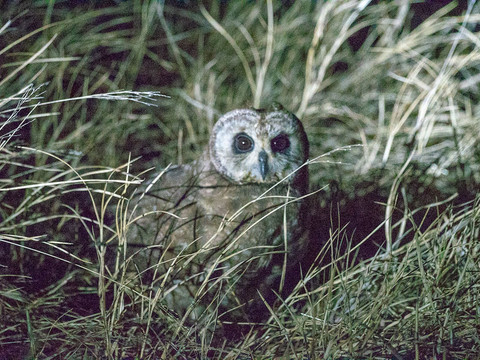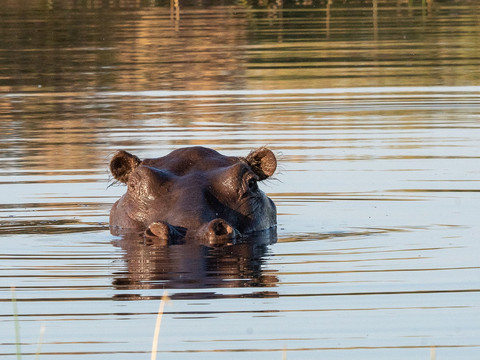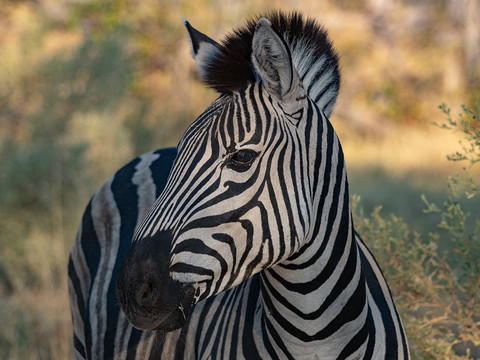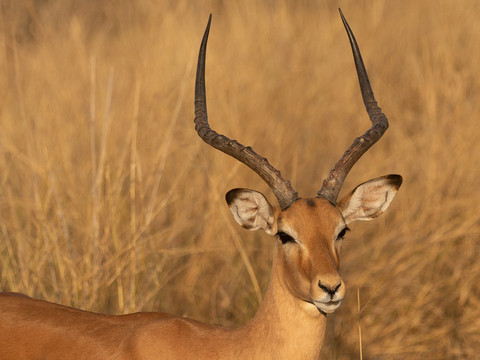The Okavango Delta in northwest Botswana is one of the last areas of natural paradise on our planet. This beautiful spot is considered one of the largest and richest wildlife wetlands in Africa and was declared a UNESCO World Heritage Site in 2014. Granted, a safari in Botswana is one of the more exclusive trips on the African continent. But it's worth the cost - from sunrise with lions who come to the waterhole for a drink to a sundowner on a hill overlooking the vast African bush.
With a small rattling propeller engine, the first morning from Maun Airport, the gateway to the Okavango Delta, you will be off to Botswana's diverse flora and fauna in 15 to 30 minutes - depending on the location of the lodge. The flight alone over the carpet of arid and semi-arid desert areas is fascinating. The first giraffes and elephants can be spotted from the air and increase the anticipation of the upcoming adventure. The Okavango, originating as Kavango in Angola, meets the foothills of the Kalahari in northwest Botswana and forms the largest inland delta in the world due to its low altitude. The water masses usually peak at the end of July and cover an area of no less than 12,000 square kilometres. This habitat in this otherwise desert-like landscape is not only attractive for the entire African fauna - Stone Age finds indicate human settlement in the area more than 100,000 years ago.
After the bumpy landing on a sand road, a guide with a jeep is already waiting to take you to the comfortable bush camp. There is nothing lacking in the camp. From the very first moment you feel like a little king or princess and you will be pampered around the clock.

Depending on the location in the delta, game drives, bush walks or even mokoro safaris in traditional dugout canoes are offered. If you are interested in a particularly large animal population, your choice should be the Khwai Concession or Chief's Island. So as a big animal fan I have chosen Splash Camp in Kwara Reserve. From the main house you have a magical view over the grass savannah. The tented houses are all beautifully furnished with a fantastic view and are all located far enough apart from each other - privacy is guaranteed.
After a tasty welcome brunch there is a siesta for the first time. A lion roars in the distance, from the terrace I spot wildebeests and zebras at the nearby waterhole. Birds are chirping.
In the afternoon we finally head for the delta - the discovery tours usually last three hours each, in an open jeep or in a classic traditional mokoro. Dugout canoeing is a great feeling, gliding slowly over the water in absolute silence - "paddling" is done with a stick, which is more like pushing off the ground. Thanks to the patience and attentiveness of the guides, the animals can be observed and photographed in their natural environment completely unaffected by our presence, provided that you have a tripod and maximum focal length. The breathtaking beauty of the Okavango Delta can be seen again and again during the boat trips and also during the game drives in the off-road vehicle and more than lives up to the reputation of this natural paradise. I see a completely unknown variety of species, both large and small, such as the tiny bird Malachite Kingfisher.
And for the first time in my life I can finally look a leopard deep into its eyes. He is resting on a hill and has probably just digested his last meal. I can literally feel how the majestic animal perceives me, observes me and tries to assess whether there is any potential danger from us. It is really impressive how close you get to the animals. Antelopes, for example, have relatively poor eyesight. For this reason they often form a symbiosis in the pack with baboons, they can smell relatively bad but see very well and so they can protect themselves together against enemies much more efficiently. During the next three days I have the luck to observe more cats of prey. Male lions with a beautiful dark mane, graceful cheetahs and even a serval - a true animal paradise.

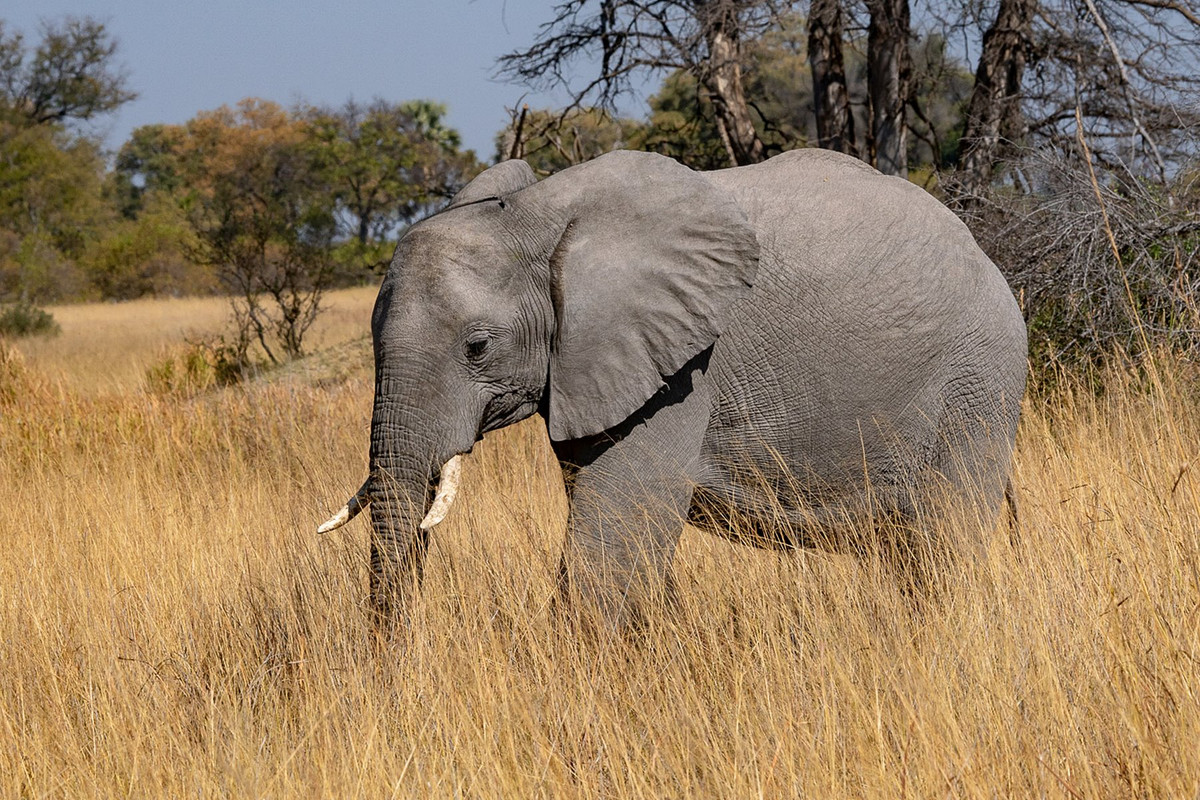
Of course the Okavango Delta, like all of Africa, also offers a beautiful sunset - combined with an obligatory sundowner. Gin and tonic, beer or coke is served in proper style before the fiery globe sinks behind the horizon. More beautiful than the sunset are for me the collected impressions, on which one looks back a little stunned but also humble. And when it gets dark and slowly cool on the airy off-road vehicle, my guide has a warm blanket and a hot water bottle - affectionately called Bushbaby - ready. Of course all this has its price. A trip to Botswana is not quite cheap - and especially to the Okavango Delta. But this can be explained relatively easily. Furnishings, food, care products - everything has to be transported to the delta by air. It is nice that there is no mass tourism in the delta. Around 50 percent of customer money goes into social projects or benefits nature conservation organisations. Nevertheless, it remains an exclusive pleasure. Ultimately, it is up to each individual to judge for himself whether the unique natural experience is worth it.
After three indescribable days in the Okavango Delta, a small machine brings me back safely to Maun to "civilisation". For me, the Okavango Delta is and remains an unforgettable experience - one of the last paradises on our planet earth.

To properly prepare for your trip
How you get there:
with SWISS via Johannesburg to Maun and then by bush plane to the Delta
How long am I supposed to go:
3 - 5 days in connection with Botswana round trip
Best travel time:
in the dry season: July - October
Highlights:
Safari experience in mokoro or jeep, Big Five, big cats
Lodge tip:
https://www.kwando.co.bw/splash
More info:
https://www.okavangodelta.com
Realised by Michael Bachmann
Further travel pictures under www.kissed-by-nature.com


